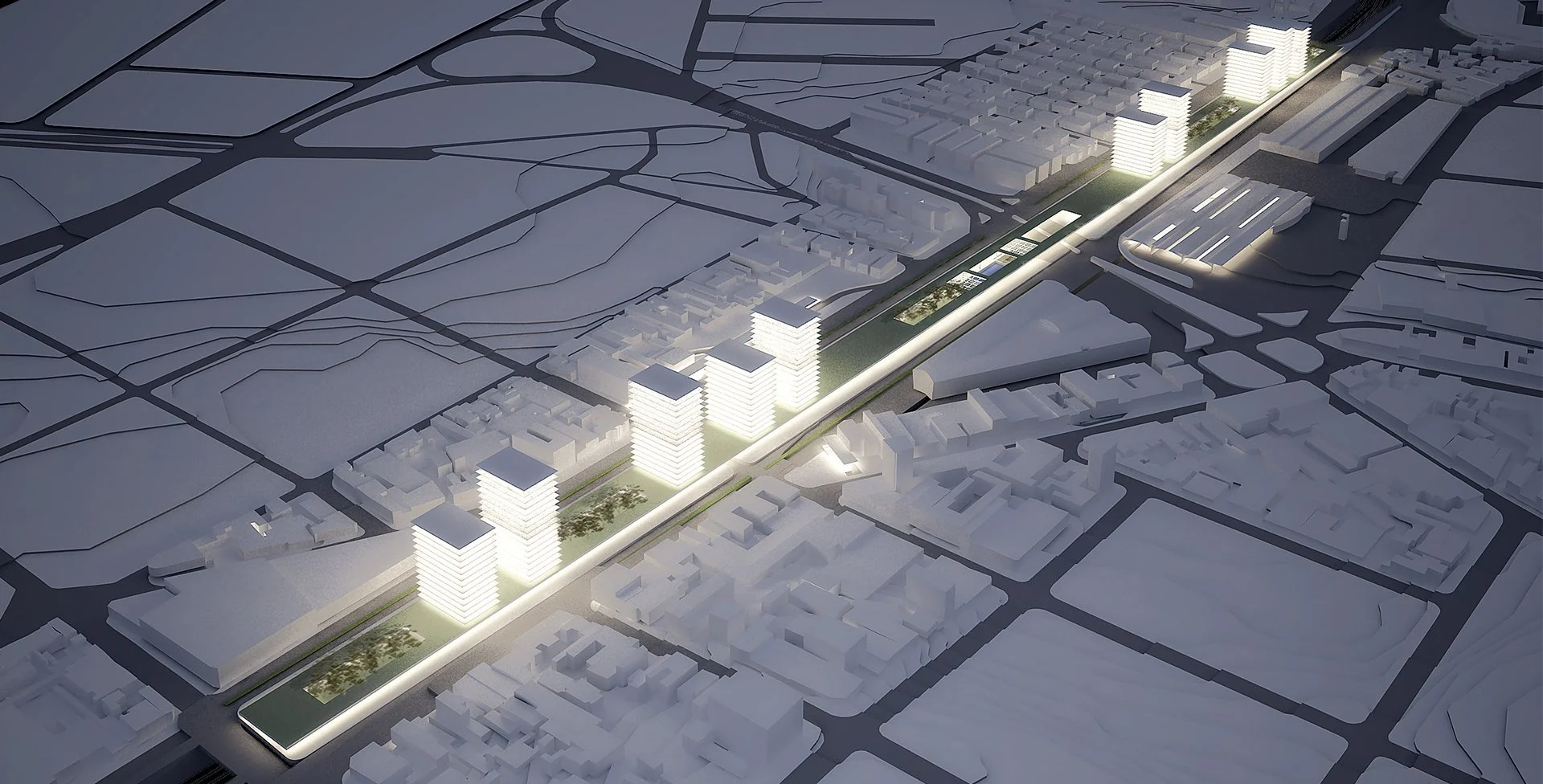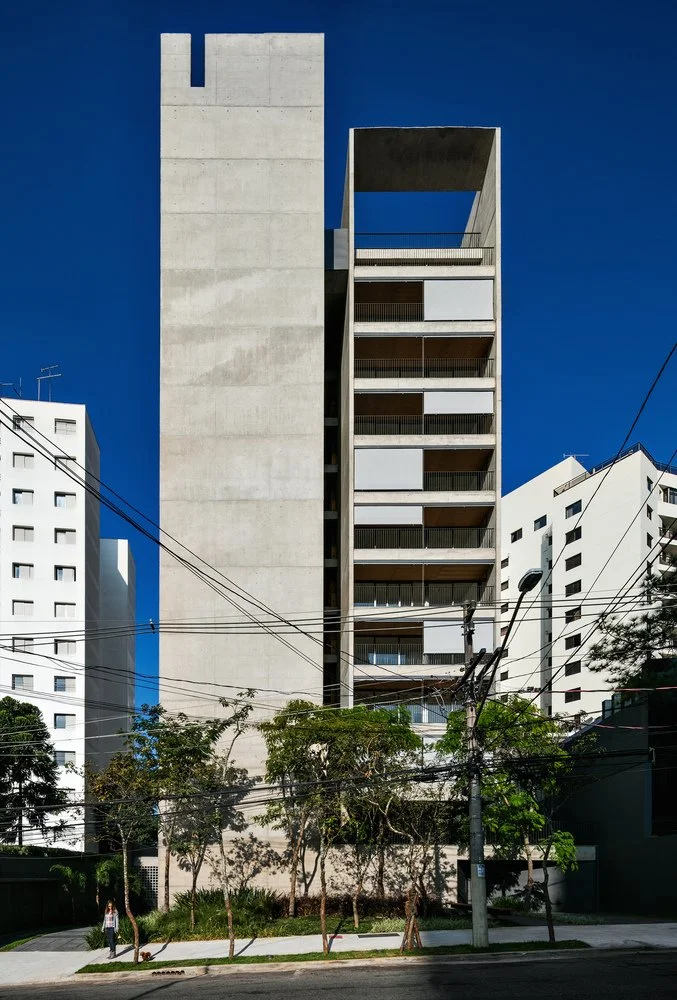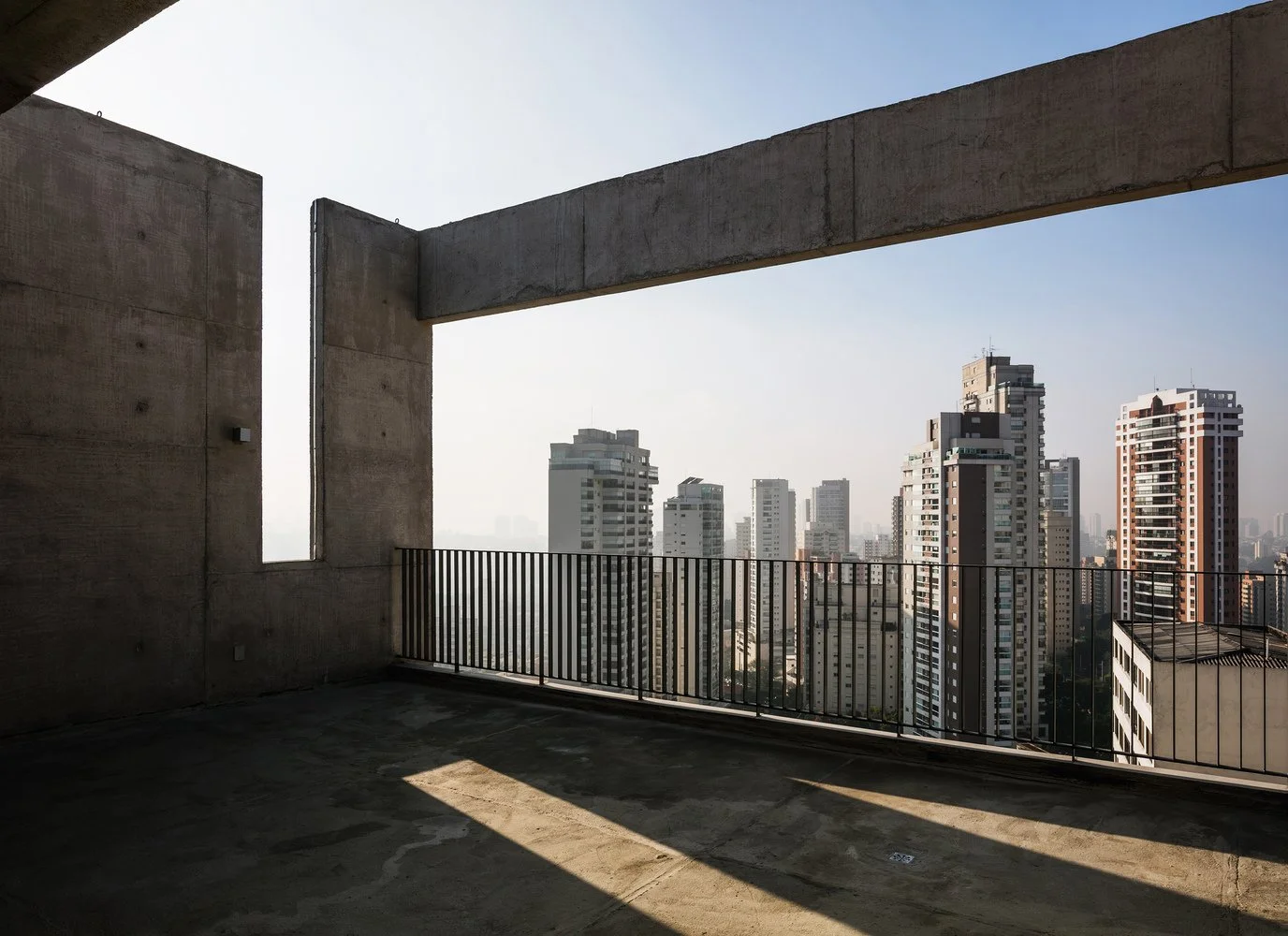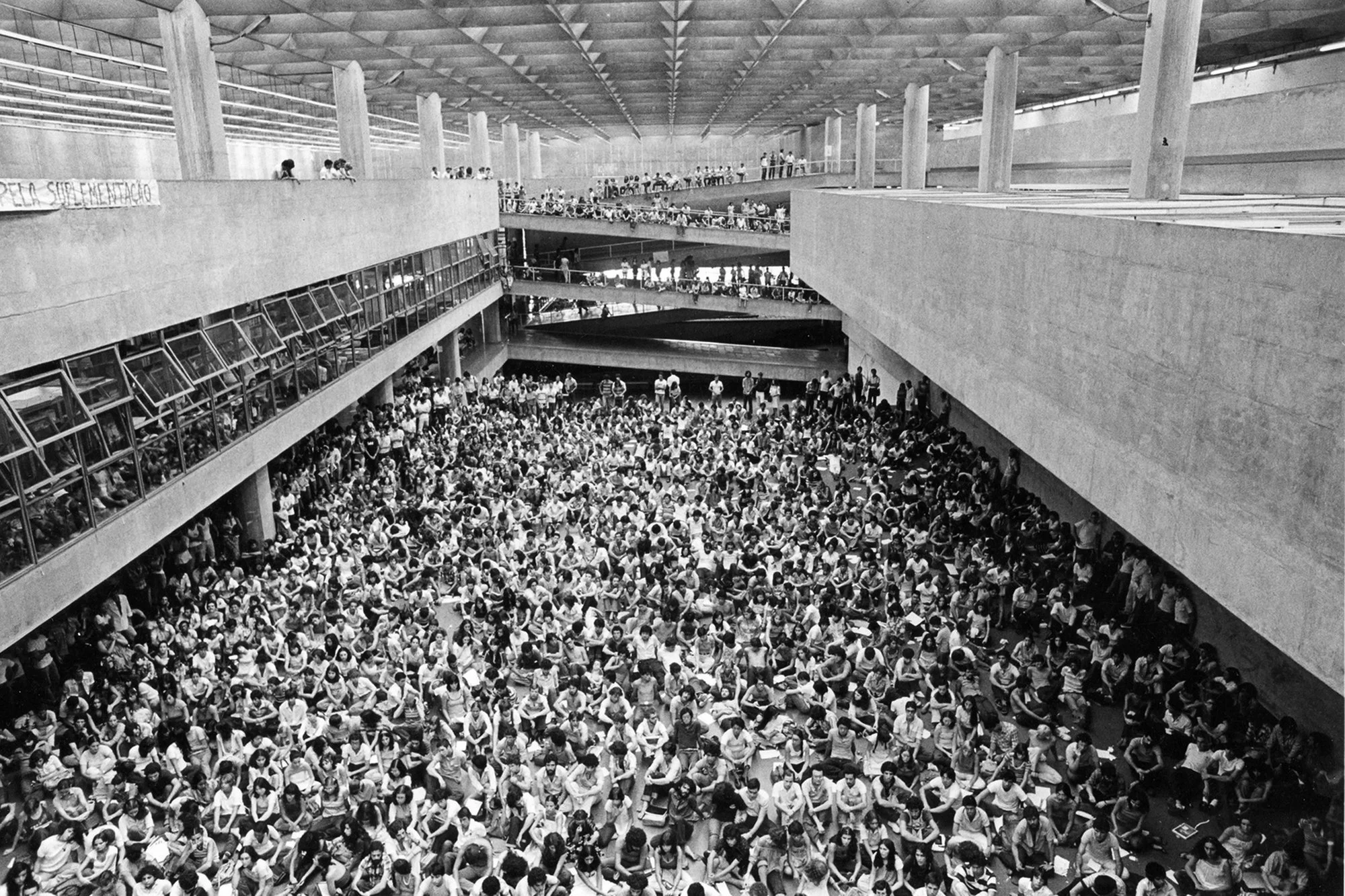In Conversation with Cristiane Muniz and Fernando Viegas
This transcript is an excerpt of an informal conversation between Anthony Averbeck (MAUD ‘22), Elyjana Roach (MAUD ‘22), and Cristiane Muniz and Fernando Viegas.
Cristiane Muniz and Fernando Viegas are architects and urbanists based in São Paulo, Brazil. They are both professors at the Escola da Cidade in São Paulo, where Cristiane is Professor and Dean of the Undergraduate Program and Fernando is Professor and Deputy President of the Institution. In 1996, they founded UNA Arquitetos with a team of partners. In 2019, Cris and Fernando became UNA MUNIZVIEGAS. They have developed projects at various scales and programs, including public infrastructure and urban projects, cultural centers, schools, commercial buildings, and housing. They have received top awards for projects by the Institute of Architects of Brazil, including the Carlos Milan Award, from the International Architecture Biennial of São Paulo and from the Bienal Iberoamericana de Arquitectura. They have participated in several national and international events, including the Venice Architecture Biennial and the exhibition “Coletivo – Arquitetura Paulista Contemporânea.” In 2018, they had two works nominated as Outstanding Projects, and were finalists for the MCHAP prize.
Anthony Averbeck (AA):
Your role as architects, exemplified by many of your projects, often transcends disciplinary silos, and incorporates urban landscape and infrastructural moves that have significant impact well beyond the confines of the singular architectural intervention. How would you define the role of urban design, if we understand it to be a bridge practice, in your work; and perhaps more broadly in shaping the contemporary city of São Paulo?
Cris Muniz (CM):
I think we believe our problems are on the scale of territory. We are in a huge country and city, and all of this informs our work. These dual territorial and local approaches are very important for us.
Fernando Viegas (FV):
Brazil is a country under construction. Our city was constructed only in one century, 20 million people living all together. This fast growth obviously has lots of problems of emergency. So, our task now is that we have this century, to construct a sense of place when we do these very big moves of infrastructure. When you look at these issues it is impossible to understand this question by making differences between landscape architecture, urban design, planning, and architecture. So I think reality shows us how to deal and work here.
When we work on this big scale; the urbanist, the architect has a very important sense of the whole, because what we do is part of a large team, including engineers and politicians. But we know how to design, how to draw; and these are our instruments. This is not to be built as the first sketch, no. The design for us is an instrument to make conversations happen. The other experts and stakeholders come with their precise knowledge, but the synthesis is what we do as designers; this is our role in society. We have this responsibility. For us here in Brazil, I think this is so important when we have to construct a country not formed.
Estação Nova Lapa, 201 - A masterplan proposal to improve the Lapa region through a new station that links existing industrial sites and considers new real estate opportunities for local investment, Una Muniz Viegas
AA:
When thinking particularly of your collective housing projects that mediate between small volumes and intimate moments to framing views and creating connections to the larger city; can you speak on the curation of scales that seems integral to your work as designers?
CM:
First, the place is very important for us. We always first go to the place; to feel, to see, to smell, to know and read the place. This is important, these crossings; the history, the geography, the people, they are the consequences of a place. We love designing these projects that form for us the rules of the city; the idea of the domestic as the basic building block of the city. I think this is a very beautiful question for an architect. The task is how to respond to other possibilities that are not just solving the problem, but giving a quality to the house or an apartment building.
FV:
When you live in a city like São Paulo, with 20 million people; or Mexico City, or New York City, it’s natural to deal with this kind of large scale; and, at the same time, construct your own place. We were born here, we have this scale inside us.
We always think of the client as if they are a child; in other words, we imagine how a child could learn playing inside our spaces. There’s a poet in Brazil, his name is Cacaso; he has a very beautiful phrase, ‘my homeland is my childhood, that’s why I live in exile.’ I love this because all the time we are looking for this lost childhood. I remember one architect from Chile, Germán del Sol, said a very beautiful thing, ‘architecture can’t change reality, but can show its best.’ It’s so beautiful. We can see ourselves reflected in a mirror, the best of ourselves, but at the same time, reality can change architecture. I think in our century, architecture can’t change everything but can show us our best.
Huma Klabin, São Paulo by Una Arquitetos
Huma Klabin, São Paulo by Una Arquitetos
Huma Klabin, São Paulo by Una Arquitetos
AA:
How does your work fit within and perhaps evolve the canons of the Paulista school? How do you see future generations of architecture and designers in Sao Paulo evolving this thinking?
FV:
We studied at FAU USP, the architecture school designed by Villanova Artigas. For us, it is the most beautiful building we know, because it’s a space that formed us as persons; not simply as architects. For us to be in the building, it changed completely how we think about freedom, respect, about possibilities in life. You make friends, you make associations, and you decide who you want to be. The Paulista school is related to the production, the works, and the architect, as you said. We entered the school in 1989. It was the first year with free elections for a President here in Brazil after the military dictatorship, so we began studying architecture in a moment in which we imagined a country that could be completely different; and this changed everything for us. It was then completely natural to learn the works of Paulo Mendes da Rocha, of Villanova Artigas, and of Lina bo Bardi - to say three of the biggest. We didn’t have to “kill the father,” so to speak. Mendes da Rocha was our professor, and we worked with him. So for us, this continuation was very beautiful. Artigas was the teacher of the teachers, the teacher of our teachers, he was this kind of leader. And Mendes da Rocha, was amazing to be together, in the corner of our school drinking a whisky every Friday. It completely changed the relationship between a master and a student. And regarding Lina Bo Bardi, to have a woman this influential changes the way you think about architecture too. Mendes de Rocha has a very beautiful quote about Lina Bo Bardi. Something like, she has a feminine work because it's essential. The chief of the tribe, who knows how to support children and their dreams. A man would not have that courage. I think this is so beautiful. Because it's impossible to have more courage than Lina. So for me and our school, Escola da Cidade, is a continuation of this tradition. It's not a question of style or material, but I think of the essential times we are dealing with. If it was impossible to construct with concrete, now it is possible to construct with another material, but with the same radicality. The questions now are completely different from the questions of the last century, and this is what we must do now.
Caramelo hall, FAU-USP designed by João Batista Vilanova Artigas
Elyjana Roach (ER):
I think we have sensed this continuity you speak of even from you teaching our studio online. How do you see your role as educators and architects in the school? Can you expand on how the Paulista school has influenced the pedagogy and culture in the large community of Brazil, but more specifically at Escola da Cidade?
FV:
I have to say all we did was collective actions, with our friends. We started our college by creating a student magazine. The name of this magazine was Caramelo, the name and the color of the main hall inside our school. A place without a name, but a place where we could be together informally; making things, having discussions and parties. After this, we decided to make a studio with 6 or 7 people, where we worked like this for many years. And then we decided to start this school together with friends. Architecture is always collective. We now see the Pritzker Prize this year is a couple, and we can imagine that one person alone, like a genius from the Renaissance, is not for our contemporary era.
We were always thinking about the profession, practice, teaching, the construction of a place; and the role of the institution of architecture in our society. We started to teach and practice simultaneously. We continue studying and learning with each student we have. This is how we think of architecture and architects. Vilanova Artigas was a professor; Paulo Mendes da Rocha was a professor, and this is a little bit different from Rio, because Niemeyer was not a professor. To have a school with friends for us, was part of what we imagined is our profession here.
CM:
We teach to change what we know; not to simply transmit what we already know. Changing this transformation is completely exciting for everybody, for the students and instructors. The process is much more interesting. Of course, the result is important, as it is the finalization of this, but I think the process is as important as the result.
FV:
There’s a writer, Eduardo Galeano, from Uruguay, who is very important for us in South America. He has a very beautiful phrase, something like, we are what we do but we are mainly what we do to change what we are. And I think a school is this; we are what we do, but we do to change ourselves all the time.
ER:
This online format of teaching is new for you as it is new for us, and in a way has allowed us to hear the way you approach architecture perhaps more directly. Do you recognize any immediate distinctions of how this online format may open up other possibilities for the profession or extend the impact of change in education?
FV:
We are discussing this a lot here in our school. What is possible to say now one year later is from opening this course to a remote possibility. Now we have people from all states from Brazil, and this has completely changed the way we think of our country. We are living in a very hard situation. Not just the pandemic, but a political crisis. To be with people from other places that make an effort to be with us in studying architecture changes us, gives us energy to think about the future. And to be with you in this course at Harvard university. We’d love to be in Cambridge together in person, but I think there’s a question of essence about the relationship between student and a teacher. We have a very important professor here called Antonio Carlos Barossi. He’s a very important architect who did his PhD thinking about education in architecture. And he always said something very beautiful, he said, “the way we look at our students, is the way they see themselves.” And I think this could be for everyone everywhere, remote or not.
ER:
Do you think that the outcome of design is changing from not being onsite, where we are designing with the approach of designing from aerial view and online only? Are there things you think we are missing?
CM:
I think in a very impressive way, what all of you are doing, are completely committed to the city. We truly believe it is very important to know the site but because we are doing this together where we can provide certain approaches to help, maybe this is why it works. I don’t think this is a method for other projects though. We would love you to be here and we could show all of this to you. But it's possible to do essays to start a conversation. We believe urban design projects are to provide a discussion; about places, needs and desires. We can do this graphically and then design from this. It’s not easy, but it's possible to do.
FV:
I completely agree with Cris. We are making the first sketch. I think if you visit, your project is of course going to change; but not so much, and this is nice. It’s beautiful that one could make a drawing that is possible to change. I love this; that the city never ends. That the city is never finished; always in transformation. So our buildings should be like this. We don’t have to imagine a building that’s fixed or impossible to change; architecture should be made to adapt and be transformed. The history of architecture shows this, the city is always changing. And this idea to construct a narrative through drawings to have this conversation, everywhere, and then you could visit the site and change, this is like a process. I really understand this is possible. But if you imagine a project that is completed, finished; I don’t think it works.






